The Minister of Mines and Technical Surveys was a position in the Canadian Cabinet from 1950 to 1966.
The former offices of Minister of Mines and Resources and Minister of Reconstruction and Supply were abolished by Statute 13 Geo. VI, c. 18, and the offices of the Minister of Citizenship and Immigration, Minister of Mines and Technical Surveys and Minister of Resources and Development created by Statutes 13 Geo. VI, c. 16, 17 and 18 respectively, each assented to on 10 Dec. 1949 and proclaimed in force on 18 Jan. 1950.
| 1. | James Joseph McCann | Cabinet of St. Laurent | January 18, 1950 – December 12, 1950 |
| 2. | George Prudham | Cabinet of St. Laurent | December 13, 1950 – June 21, 1957 |
| 3. | Léon Balcer acting | Cabinet of Diefenbaker | June 21, 1957 – August 6, 1957 |
| 4. | Paul Comtois | Cabinet of Diefenbaker | August 7, 1957 – October 6, 1961 |
| 5. | Walter Gilbert Dinsdale acting | Cabinet of Diefenbaker | October 10, 1961 – December 27, 1961 |
| 6. | Jacques Flynn | Cabinet of Diefenbaker | December 28, 1961 – July 12, 1962 |
| 7. | Hugh John Flemming acting | Cabinet of Diefenbaker | July 18, 1962 – August 8, 1962 |
| 8. | Paul Martineau | Cabinet of Diefenbaker | August 9, 1962 – April 22, 1963 |
| 9. | William Moore Benidickson | Cabinet of Pearson | April 22, 1963 – July 6, 1965 |
| 10. | John Watson MacNaught | Cabinet of Pearson | July 7, 1965 – December 17, 1965 |
| 11. | Jean-Luc Pepin | Cabinet of Pearson | December 18, 1965 – September 30, 1966 |
The new position of Minister of Energy, Mines and Resources was created on October 1, 1966.
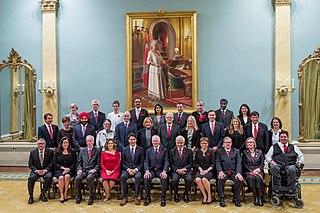
The Cabinet of Canada is a body of ministers of the Crown that, along with the Canadian monarch, and within the tenets of the Westminster system, forms the government of Canada. Chaired by the prime minister, the Cabinet is a committee of the King's Privy Council for Canada and the senior echelon of the Ministry, the membership of the Cabinet and Ministry often being co-terminal; as of November 2015 there were no members of the latter who were not also members of the former.
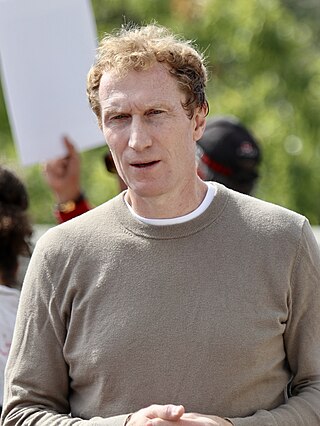
The minister of immigration, refugees and citizenship is a minister of the Crown in the Canadian Cabinet. The minister is responsible for Immigration, Refugees and Citizenship Canada, which is the federal department responsible for immigration, refugee and citizenship issues in Canada.
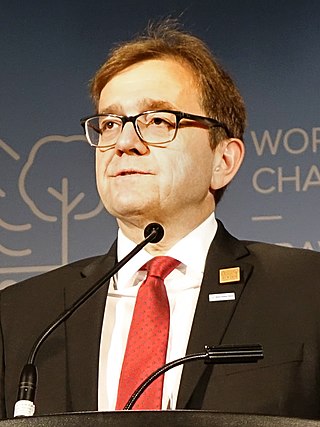
The minister of energy and natural resources is the minister of the Crown in the Canadian Cabinet who is responsible for Natural Resources Canada (NRCan).
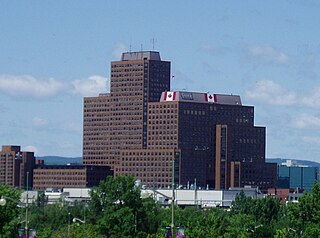
Crown–Indigenous Relations and Northern Affairs Canada is the department of the Government of Canada responsible for Canada's northern lands and territories, and one of two departments with responsibility for policies relating to Indigenous peoples in Canada.
The Canadian Forest Service is a sector of the Canadian government department of Natural Resources Canada. Part of the federal government since 1899, the CFS is a science-based policy organization responsible for promoting the sustainable development of Canada's forests and competitiveness of the forest sector to benefit present and future Canadians. Some of the research areas that the CFS is involved in include; forest fire, climate change, silviculture, soils, insects and disease, remote sensing and forest management. Since 1991 the sector has produced an annual report, The State of the Forest in Canada, which describes the status of the nation's forests and the forest industry.

The Ministry of Natural Resources is a government ministry of the Canadian province of Ontario that is responsible for Ontario's provincial parks, forests, fisheries, wildlife, mineral aggregates and the Crown lands and waters that make up 87 per cent of the province. Its offices are divided into Northwestern, Northeastern and Southern Ontario regions with the main headquarters in Peterborough, Ontario. The current minister is Graydon Smith.
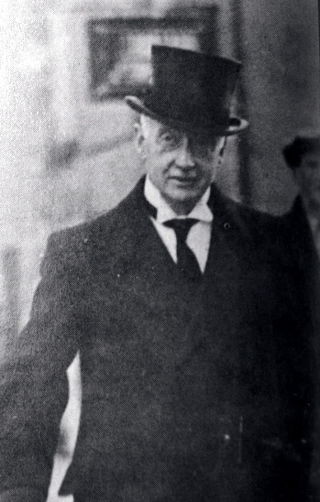
The Ministers and Secretaries Acts 1924 to 2020 is the legislation which governs the appointment of ministers to the Government of Ireland and the allocation of functions between departments of state. It is subject in particular to the provisions of Article 28 of the Constitution of Ireland. The Acts allow for the appointment of between 7 and 15 Ministers of Government across 17 Departments, and for the appointment of up to 20 junior ministers, titled Ministers of State, to assist the Ministers of Government in their powers and duties.
His or Her Majesty's Privy Council in Ireland, commonly called the Privy Council of Ireland, Irish Privy Council, or in earlier centuries the Irish Council, was the institution within the Dublin Castle administration which exercised formal executive power in conjunction with the chief governor of Ireland, who was viceroy of the British monarch. The council evolved in the Lordship of Ireland on the model of the Privy Council of England; as the English council advised the king in person, so the Irish council advised the viceroy, who in medieval times was a powerful Lord Deputy. In the early modern period the council gained more influence at the expense of the viceroy, but in the 18th century lost influence to the Parliament of Ireland. In the post-1800 United Kingdom of Great Britain and Ireland, the Irish Privy Council and viceroy Lord Lieutenant had formal and ceremonial power, while policy formulation rested with a Chief Secretary directly answerable to the British cabinet. The council comprised senior public servants, judges, and parliamentarians, and eminent men appointed for knowledge of public affairs or as a civic honour.
The Minister of the Interior was the member of the Canadian Cabinet who oversaw the Department of the Interior, which was responsible for federal land management, immigration, Indian affairs, and natural-resources extraction.
An Appropriation Act is an Act of the Parliament of the United Kingdom which, like a Consolidated Fund Act, allows the Treasury to issue funds out of the Consolidated Fund. Unlike a Consolidated Fund Act, an Appropriation Act also "appropriates" the funds, that is allocates the funds issued out of the Consolidated Fund to individual government departments and Crown bodies. Appropriation Acts were formerly passed by the Parliament of Great Britain.
The position of Minister of Mines and Resources was a cabinet portfolio in Canada from 1936 to 1950. The mines portfolio had previously been that of the Minister of Mines, which was a portfolio adjunct to other ministries such as Inland Revenue and Indian Affairs.
The Minister of Mines was a Minister of the Crown in the Canadian Cabinet responsible for the mining industry in Canada.
The Geological Survey of Western Australia is an authority within the Department of Mines and Petroleum of the Government of Western Australia that is responsible for surveying and exploration of Western Australia's geological resources. The department provides information to industry, technical support and professional guidance to government on geology, mining and petroleum resources.

The Mines and Geosciences Bureau (MGB) is a government agency of the Philippines under the Department of Environment and Natural Resources (DENR). The MGB is responsible for the conservation, management, development, and use of the country's mineral resources, including those in reservations and public lands.